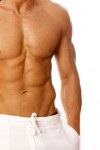
Real Definition

100% Traditional East Asian Herbal Medicine
With NO Fillers

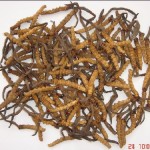 A while back I wrote about a type of mushroom called Cordyceps used in Chinese medicine which sells for $100.00 an ounce or even more. (Click here for that article) Here’s one reason this herb/fungus is such a prized possession. The very prestigious, University of Nottingham just published the findings from researchers there who have discovered how this mushrooms works within our bodies.
A while back I wrote about a type of mushroom called Cordyceps used in Chinese medicine which sells for $100.00 an ounce or even more. (Click here for that article) Here’s one reason this herb/fungus is such a prized possession. The very prestigious, University of Nottingham just published the findings from researchers there who have discovered how this mushrooms works within our bodies. 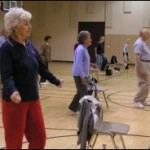 The Struthers Parkinson’s Center in Minneapolis teaches a form of Tai Chi and both The Cleveland Clinic and the Stanford School of Medicine recommend Tai Chi for Parkinson’s sufferers. This healing art, or should I say Chinese medicine, developed over a 1000 years ago are a series of slow, flowing movements that can help maintain flexibility, balance and coordination.
The Struthers Parkinson’s Center in Minneapolis teaches a form of Tai Chi and both The Cleveland Clinic and the Stanford School of Medicine recommend Tai Chi for Parkinson’s sufferers. This healing art, or should I say Chinese medicine, developed over a 1000 years ago are a series of slow, flowing movements that can help maintain flexibility, balance and coordination. 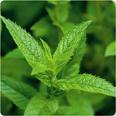 Over indulgence and holidays seems to go hand in hand. Rich, tempting food seems to be everywhere, leaving us with heartburn and indigestion. For thousands of years people have turned to natural plants to relieve their suffering from acid reflux, heartburn and indigestion. Many found Chinese herbs, fruits and roots were the answer to what ailed them. Here are a four herbal remedies from the history books that helped back then and still help today with the age old problem of indigestion.
Over indulgence and holidays seems to go hand in hand. Rich, tempting food seems to be everywhere, leaving us with heartburn and indigestion. For thousands of years people have turned to natural plants to relieve their suffering from acid reflux, heartburn and indigestion. Many found Chinese herbs, fruits and roots were the answer to what ailed them. Here are a four herbal remedies from the history books that helped back then and still help today with the age old problem of indigestion.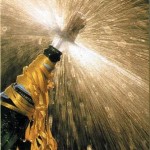 It is nearly the end of another year and always a time for reflection. If you are like me you give yourself an annual report card on your year. Or you just skip the judgment phase and simply create some New Years Resolutions of things to change. My report card for the year would say something like “valiant effort, but balance needs improvement”. The “balance” I promised myself each day didn’t quite materialize the way I had hoped, so my New Years Resolution is to change that and find more balance. What is this balance I'm referring to?
It is nearly the end of another year and always a time for reflection. If you are like me you give yourself an annual report card on your year. Or you just skip the judgment phase and simply create some New Years Resolutions of things to change. My report card for the year would say something like “valiant effort, but balance needs improvement”. The “balance” I promised myself each day didn’t quite materialize the way I had hoped, so my New Years Resolution is to change that and find more balance. What is this balance I'm referring to? The recent news about urinary tract cancer linked to the ingestion of a Chinese herb called Mu tong should spark awareness about herbal medicine suppliers. Fortunately in the U.S. single herbs and formulas containing Mu tong or Aristolochic Acid has been banned since 2000, they cannot be imported.
The recent news about urinary tract cancer linked to the ingestion of a Chinese herb called Mu tong should spark awareness about herbal medicine suppliers. Fortunately in the U.S. single herbs and formulas containing Mu tong or Aristolochic Acid has been banned since 2000, they cannot be imported. 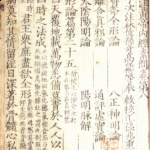 2000 years ago today, the year was AD 9. (on most calendars anyway) No cell phones, no cars, no health insurance. Things were pretty different, or were they? People still talked without cell phones, traveled without cars and got sick without insurance. What hasn’t changed in 2000 years is herbal medicine. Specifically, Chinese herbal medicine is not much different than what we use today.
2000 years ago today, the year was AD 9. (on most calendars anyway) No cell phones, no cars, no health insurance. Things were pretty different, or were they? People still talked without cell phones, traveled without cars and got sick without insurance. What hasn’t changed in 2000 years is herbal medicine. Specifically, Chinese herbal medicine is not much different than what we use today. 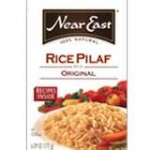 I was making dinner tonight, nothing special, chicken, rice pilaf and salad. I’ve love the Near East brand of Rice Pilaf and have used it for years. So what’s so special to make me write about this. Well, Near East is a well known, multi-million dollar company who has done their share of research on packaging their products. A small cardboard box holds the rice and a FOIL PACKET holds the herbs and spices, the secret ingredients that give the rice that great flavor.
I was making dinner tonight, nothing special, chicken, rice pilaf and salad. I’ve love the Near East brand of Rice Pilaf and have used it for years. So what’s so special to make me write about this. Well, Near East is a well known, multi-million dollar company who has done their share of research on packaging their products. A small cardboard box holds the rice and a FOIL PACKET holds the herbs and spices, the secret ingredients that give the rice that great flavor. 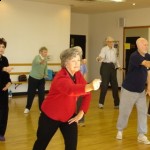 The American Academy of Otolaryngology – Head and Neck Surgery Foundation (AAO-HNSF) says Tai Chi can help your dizziness and balance disorders. Tai chi is a form of Chinese martial arts often practiced for its health benefits. Practiced widely in Asia it can be an effective treatment option for patients who suffer from dizziness and vestibular disorders.
The American Academy of Otolaryngology – Head and Neck Surgery Foundation (AAO-HNSF) says Tai Chi can help your dizziness and balance disorders. Tai chi is a form of Chinese martial arts often practiced for its health benefits. Practiced widely in Asia it can be an effective treatment option for patients who suffer from dizziness and vestibular disorders.
Research done on “Tai Chi as a Form of Vestibular Rehabilitation” has been conducted by Paul S. Lee, MD. Researchers evaluated the utility of Tai Chi in managing patients with vestibular symptoms who have failed conventional vestibular therapy. It could include individualized physical therapy or different sets of physical maneuvers that a doctor performs on a patient. In Asia, not only is Tai Chi popular am
Researchers conducted a questionnaire study from April 2008 to March 2009 at an outpatient rehabilitation program, utilizing the activities-specific balance confidence scale and dynamic gait index survey, both prior to therapy and at the conclusion of an eight-week course. A total of 21 patients (18 females, three males) completed the study to date. Patients reported subjective improvements in their vestibular symptoms. For those who experience ringing in the ears or tinnitus may not necessarily be helped by Tai Chi, but may see improvement with Chinese herbs. Researchers theorize that the technique may be effective because Tai Chi promotes coordination through relaxation, rather than muscular coordination.
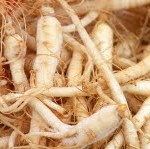 Ever since Dr. Oz’s interview in Esquire magazine (Dec. 09) I’ve been fielding a phethera of questions on ginseng. Thanks Dr. Oz, I’m always happy to talk about the Chinese herbs I love. It’s an added bonus that the best American Ginseng is actually grown in Wisconsin, my old stomping grounds. I also love to buy American whenever possible.
Ever since Dr. Oz’s interview in Esquire magazine (Dec. 09) I’ve been fielding a phethera of questions on ginseng. Thanks Dr. Oz, I’m always happy to talk about the Chinese herbs I love. It’s an added bonus that the best American Ginseng is actually grown in Wisconsin, my old stomping grounds. I also love to buy American whenever possible.
In response to a question “how to prevent swine flu”, Dr. Oz says: “Vitamin D and American ginseng are the two things I recommend the most. Vitamin D because it stimulates dramatically the ability of the immune system to respond, and American ginseng because it stimulates these things called Toll-like receptors in the gut. They’re ancient – our most primitive immune response – and they make it difficult for bugs to get in through the intestinal wall.”
This is an excellent post on ginseng from Acupuncture Chicago.
By Jennifer Dubowsky
The 3 Most Well Known Types Of Ginseng
Chinese Ginseng (Panax ginseng)
Considered the “king of all herbs” in many countries, found in the forests of northeast China, Manchuria and Korea. In Traditional Chinese Medicine, Chinese ginseng is used to tonify the “Qi” (vital energy or life energy force) and is a powerful “yang” or warming tonic herb. It has been reported to: stimulate the immune system; fight fatigue, combat stress, slow aging, balance blood sugar levels, enhance mental performance and memory, lower cholesterol, and strengthen the heart muscle. It may even have anti-tumor and anticancer properties. Before rushing off to get some Chinese Ginseng be aware that it’s overuse can have some negative side effects including; irritability, insomnia and rapid heart beat.
*Panax ginseng has had a notorious reputation as a sexual rejuvenator, particularly for men, however much of this reputation seems to be over-hyped.
American Ginseng (Panax quinquefolium)
Is indigenous to eastern woodlands from Georgia to Quebec, and was used by Native Americans. The picture in this post is of American Ginseng. While not as well known as Chinese Ginseng, American Ginseng has been around for hundreds of years. Jesuit Priests were reported to be trading American Ginseng to the Chinese as early as 1718. American Ginseng has a more “yin” or cooler nature than its Chinese counterpart. While still energizing the body, American Ginseng calms the central nervous system, quiets the brain and lowers blood pressure. Also, because of its more “yin” nature, it is generally better to use on a daily, long term basis than Chinese Ginseng. However if you tend to have a cold constitution, this might not be the herb for you.
Siberian Ginseng (Eleutherococcus senticosus)
Native to Siberia, Japan, Korea and China. Although not a “true ginseng”, this variety is most highly prized. Eleuthero was traditionally used to promote longevity and general health. Many herbalists prefer Eleuthero as the ginseng for helping with women’s health issues, particularly with depression associated with PMS and menopause. Research, mostly from Russia, confirms this herb’s ability to increase mental and physical performance, stimulate the immune system, increase movement of white blood cells, promote circulation and enhance the benefits of medical radiation treatments while lessening its negative side-effects.
Cautions About Ginseng
Ginseng should be avoided by patients who are pregnant or have high blood pressure. In addition, ginseng may increase the effects other stimulants, which may cause sweating, insomnia, or an irregular heartbeat. It should not be used in conjunction with antipsychotic medications, steroids or hormones. As with all Chinese herbs it is best to consult with a Chinese Herbalist and see what is best for you before taking ginseng products.
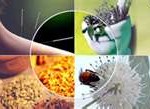 As patient awareness of health and disease prevention has grown, so too has their interest in alternatives to traditional therapeutic disease-based options. The National Center for Complementary and Alternative Medicine (NCCAM) defines Complementary and Alternative Medicine (CAM) as "a group of diverse medical and health care systems, practices, and products that are not currently part of conventional medicine." This may soon change with new health care legislation on the horizon.
As patient awareness of health and disease prevention has grown, so too has their interest in alternatives to traditional therapeutic disease-based options. The National Center for Complementary and Alternative Medicine (NCCAM) defines Complementary and Alternative Medicine (CAM) as "a group of diverse medical and health care systems, practices, and products that are not currently part of conventional medicine." This may soon change with new health care legislation on the horizon.Patients are often reluctant to discuss the use of CAM with their physicians for fear of being rebuked or dismissed. Many physicians view alternative-based therapies as "quackery" and adopt an attitude of "semi-indulgent contempt," as described by one physician. Further complicating matters is the relative lack of practitioner knowledge and training on CAM modalities. Nudged forward by patient demand, this view is clearly changing and now more than 70 medical schools and 45 medical centers, including The Mayo Clinic and The Cleveland Clinic, have adopted integrative and alternative medical centers.
Check out this informational video about PMS Relief. Click below:
Natural Menstrual Cramp Relief with Pacific Herb's PMS Relief

